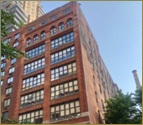Q1. Do you know anything about Maffucci syndrome?
It is a rare disorder in which patients get angiomas or benign tumors involving blood vessels, as well as enchondromas (benign cartilage tumors), that can affect any bone in the body including the foot. I have seen cases where isolated enchondromas (i.e., not part of Maffucci syndrome) affect the foot and the treatment is largely non-operative unless a fracture develops in the bone affected. This condition more commonly occurs in the hands.
Q2. I have hammertoe, but I can still move and straighten it. Is there any way to prevent it from getting worse?
Depending on the case, there are a variety of pads and splints that can help. These, however, generally do not keep a hammertoe from getting worse. Tape can be used in a similar fashion to hold the toe down. The most common cause of hammertoe is an associated bunion. To that extent, by wearing sensible shoes, avoiding major impact activities, and addressing the bunion, one might be able to keep the hammertoe from getting worse. We often advise patients to fix a bunion before the second toe becomes very hammered. This might prevent a hammertoe from occurring at all. There is, however, no definitive way of keeping these deformities from getting worse once they develop. Another approach is to stretch the calf as calf tightness can lead to overload of the forefoot in conditions such as hammertoe. Consult with a physician before you use any pads or splints and about treatment options.
Q3. I have a bunion on my right foot and it is painful. How do I know if I need surgery?
This is a very involved question which really requires a lengthy discussion between you and your foot and ankle surgeon. Pain can mean different things to different people and it can actually occur at different places. The most common site of pain in a bunion is right on the prominence of the bone itself; however, with the bunion, the other toes can become overloaded and they can hurt as well. In general, I tell patients to wait on bunion surgery until it is interfering substantially with shoe wear and activities.
The decision really to perform a bunion surgery is also based upon the understanding of the risks and benefits of the surgery and the recovery process. No matter what bunion procedure is chosen, the recovery can take multiple months. One last factor that I tell patients is, when the second toe starts having symptoms, it is probably a sign that the bunion should be addressed. That is because the results after a second hammertoe surgery are less predictable and it is best to address the bunion before it gets to that point.
Q4. I had surgery for a bone spur that was growing out of my big toe last year. Can the bone spur grow back? Is there anything that I can do to prevent it from growing back?
This question most likely refers to the condition which is called hallux rigidus. This is when arthritis occurs in the big toe and, most particularly, occurs on the top of the toe. There is commonly a painful spur that forms at this location. There is a procedure called a cheilectomy that can be used to take the bump off the toe. This is best used in patients who do not have the most advanced arthritis.
My experience is that the bump itself usually does not grow back; however, what can happen is further loss of cartilage in the rest of the joint and general pain. However, stiffness can occur. There is really nothing that one can do to prevent the spur from growing back other than to say that a lot of pounding activities and activities involving the foot being on tiptoes and/or wearing high heels probably causes more trauma over time to the big toe and probably will lead to faster development of arthritis.
Q5. I was born with flatfeet and did not have any problems when I was younger. Now that I am in my 50s, my feet hurt when I walk. Will surgery help with the pain?
This sounds most likely to be the development of what is called “adult-acquired flatfoot deformity.” It usually occurs in people in their 40s or 50s. Patients generally tell me they have had flatfoot their whole life, but that it has worsened over time. Weight gain and age can be contributors. Essentially, the arch can no longer take the stress and strain and the arch starts collapsing. This is probably due to the fact that the ligaments fail and the posterior tibial tendon, which helps support the arch, degenerates and fails as well.
The mainstay of early treatment typically involves an orthotic, ankle brace and physical therapy. When this fails and the patients continue to have pain, flatfoot reconstruction can be recommended. This is a conversation that you should have with a foot and ankle surgeon.
Dr. Scott Ellis is a foot and ankle surgeon at Hospital for Special Surgery. He? performs a variety of surgical procedures, including foot and ankle fusion, total ankle replacement, along with bunion and adult flatfoot reconstruction. He also surgically treats foot and ankle fractures and their long term sequelae.






